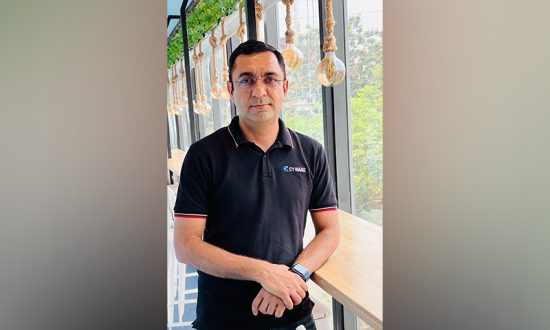Akshat is the Chief Technology Officer and Co-founder at Cyware. A thought leader and a creative thinker, Akshat has immense expertise in bringing innovative technology solutions for tackling societal and enterprise problems. Akshat holds a Management degree from the most prestigious business school in India, IIM Lucknow, and a Master’s degree in Computer Science from the Central University of Hyderabad.
Cybersecurity is a factor affecting the bottom line for all organizations in today’s threat landscape. While organizations are increasing their cybersecurity spending to manage the growing cyber risks, the outcomes of such investments are not always clear. Organizations need to evaluate the improvement in their cybersecurity maturity on a regular basis to find the right path towards cyber resilience. While there are many new security technologies that promise to solve specific use cases, organizations also need to assess the bigger picture and address fundamental gaps and issues in their security operations.
The cybersecurity maturity journey
Cybersecurity maturity can be evaluated by finding the answers to several key questions about the capability of an organization’s security operations. To start with, organizations need to document their cybersecurity strategy and crisis management plan to effectively deal with incidents while suffering minimal damage to their assets and operations.
Organizations also need to assess their capabilities to perform security actions in different stages of the incident response lifecycle, all the way from detection to containment, response, and beyond. These capabilities must be able to protect all kinds of assets that an organization possesses, including endpoints, servers, networks, applications, and more.
Besides having robust threat detection and response capabilities, other markers of a mature cybersecurity apparatus include having the capability for threat intelligence analysis and last-mile operationalization for proactively identifying and mitigating threats before they lead to lateral movement or data exfiltration. To further the maturity of security operations, organizations can also leverage security orchestration and automation to accelerate and automate their internal processes across cloud and on-premise environments.
Organizations also need to reshape their security operations teams to eliminate silos within their security teams. A mature security setup involves real-time alerting, communication, and collaboration among all key stakeholders, including the IT and security teams and senior leadership of the organization, to give them a complete understanding of their security posture. On top of this, frequent risk/threat assessments of an organization’s security posture and information sharing with external partners, industry peers, regulators, and others, are key to achieving cyber resilience and cybersecurity maturity.
Cyber fusion for a mature security posture
In the case of traditional security operations centers (SOCs), many legacy tools and technologies are in use that do not fully address some of the challenges lying in the way of achieving high cybersecurity maturity. Organizations lack the agility needed to counter today’s fast-moving threats that can cause too much damage to the technology infrastructure and disrupt operations before an adequate response is delivered. The next-generation, automated SOC in the form of a Cyber Fusion Center (CFC) is now emerging as the answer to many of the security maturity challenges organizations face. A CFC acts as the forcing function for innovation in security operations to make the best out of the people, processes, and technologies deployed.
The concept of a CFC is fast becoming the go-to approach for reshaping security operations in an integrated and streamlined manner to boost the cybersecurity maturity of an organization. A CFC brings diverse security functions under a single roof, including incident response, vulnerability management, threat hunting, and so on. This means that security teams no longer operate in individual silos that lack information exchange and collaboration.
When it comes to leveraging threat intelligence, CFCs provide a leg up to organizations by pushing the boundaries of threat intelligence collection, analysis, and dissemination. A CFC collates the threat intelligence gained from multiple internal and external sources to enhance threat detection and response workflows by focusing on the most critical and relevant threats. By providing last-mile delivery of threat intelligence to different stakeholders in an organization, CFCs enable threat intelligence operationalization at scale across the security stack.
Having an incident response team that operates in a reactive manner does not cut it in today’s cyber landscape. Organizations need to provide a smarter and faster response to threats. This is why a CFC also leverages security orchestration and automation (SOAR) to drive security actions using various security tools and technologies through machine capabilities. This means security analysts get relieved of the burden of performing many manual, repetitive tasks on a daily basis to analyse and mitigate common threats. Instead, automated cross-functional workflows in a CFC can help tackle a majority of the threats with little to no human intervention. Security analysts can therefore focus on conducting in-depth investigations for the most critical threats.
Within a CFC, the lives of security managers and senior executives become much easier as they get an eagle-eye view of their threat environment, their security performance metrics, and their end-to-end incident/case management pipelines. This allows them to easily govern their security operations and evaluate their progress to stay in line with the overall cybersecurity strategy of the organization.
Key takeaways
While many organizations have setup their SOCs with a variety of people, processes, and technologies to address different security use cases, the synergy between these elements is often lacking. A CFC provides the binding factor to integrate and centralise security operations, while dramatically improving threat detection and response, simplifying governance, and enhancing threat visibility. This leads to optimum use of different technological and human resources for achieving the desired security outcomes.
By implementing a CFC, an organization can upgrade its security maturity and develop long-term cyber resilience through process maturity, operational effectiveness, and extensive risk management.


